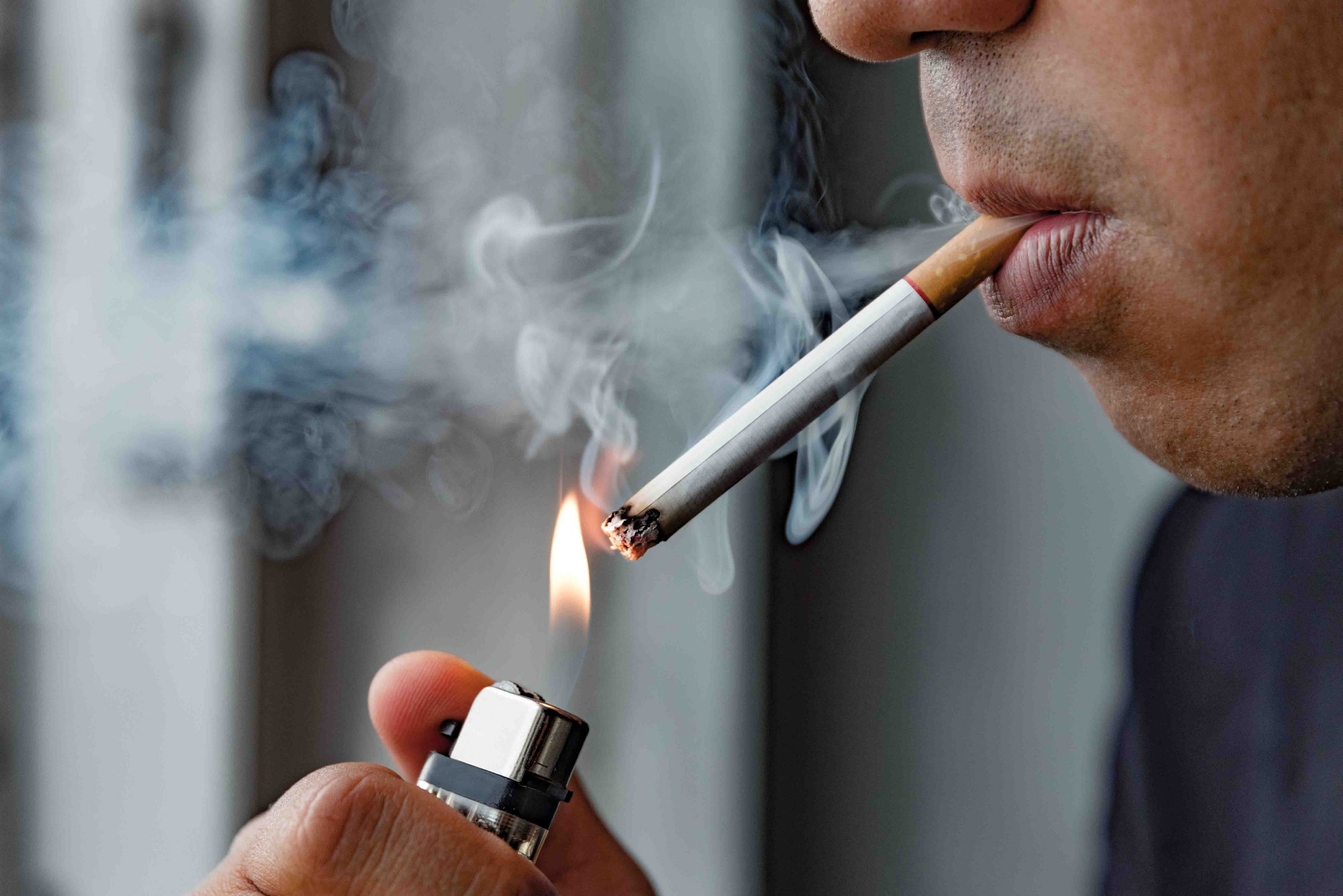In a recent study published in the Scientific Reports Journal, researchers conducted in situ analyses of tissue samples from individuals who smoked, were former smokers, or never smoked to understand the mechanisms through which exposure to cigarette smoke causes alterations in bone structure.
 Study: Smoking induces increased apoptosis in osteoblasts: changes in bone matrix organic components. Image Credit: Nopphon_1987/Shutterstock.com
Study: Smoking induces increased apoptosis in osteoblasts: changes in bone matrix organic components. Image Credit: Nopphon_1987/Shutterstock.com
Background
Studies have shown that cigarette smoking causes homeostasis impairment in bone, and the compounds in cigarette smoke cause chronic inflammation in the airways and subsequent tissue destruction.
Bone comprises cells and the organic and inorganic components of the extracellular matrix. While crystalline hydroxyapatite makes up a large part of the inorganic matrix component, the organic part of the matrix consists of approximately 20 proteins, of which type I collagen is the most ubiquitous.
The osteoblastic lineage cells (consisting of the osteocytes, osteoblasts, and the lining) and the osteoclasts are the two specialized bone tissue cells that maintain homeostasis.
The disruption of homeostasis due to smoking is attributed to the imbalance between osteoblastogenesis and osteoclastogenesis, with the inhibition of the former and stimulation of the latter.
Previous studies by the present study's authors have shown that exposure to cigarette smoke reduces the deposition of type I collagen and exacerbates demineralization of the bone, causing bone fragility.
However, these studies have depended largely on clinical parameters and bone images, and there is a shortage of in situ studies examining the impact of smoking on bone structure.
About the study
In the present study, the researchers used femoral head tissue samples from individuals undergoing total hip arthroplasty surgery after obtaining informed consent from the participants.
Only samples from patients with primary osteoarthritis from mechanical or degenerative causes were included, while tissue samples from patients undergoing total hip arthroplasty due to vascular pathologies, hip dysplasia, childhood disease sequelae, post-traumatic osteoarthritis, or proximal femur fractures due to osteoporosis were not included.
A clinical questionnaire collected data on regular medications, associated pathologies, comorbidities, demographic information, and smoking behavior.
Tissue samples from individuals with systemic arterial hypertension, diabetes mellitus, dyslipidemia, autoimmune diseases, oncological diagnoses, and individuals regularly using anticonvulsants or anticoagulants were included in the analysis if the individuals were regularly using the medications.
The tissue samples were categorized into three groups based on smoking status: smokers, former smokers, and non-smokers; they were analyzed using histological staining with hematoxylin and eosin and quantified to determine trabecular volume.
Furthermore, immunofluorescence was used to measure collagen types I and V, and enzyme-linked immunosorbent assay (ELISA) was used to determine the levels of interleukin-6 (IL-6) IL-1β, tumor necrosis factor-α (TNF-α), osteoprotegerin (OPG), and receptor activator of nuclear factor kappa-Β ligand (RANKL).
Additionally, osteoblast apoptosis analyses were performed using Caspase-3 anti-rabbit polyclonal immunoglobulin G (IgG) antibodies.
Results
The results indicated that the trabecular volume in the bone tissue of smokers was significantly lower than that of non-smokers, while the type I collagen percentage in smokers and former smokers was lower than in non-smokers.
In contrast, the percentage of collagen type V was higher in the tissue samples from smokers than that from non-smokers. Additionally, although the evaluation of RANKL levels did not show a significant difference between the groups, the OPG levels in the tissue from smokers were lower than that from non-smokers.
Furthermore, the inflammatory cytokines IL-6, IL-1β, and TNF-α were elevated in the tissue samples from smokers and former smokers compared to tissue samples from non-smokers.
The increase in the levels of proinflammatory cytokines due to exposure to cigarette smoke and the resulting increase in osteoblast apoptosis is thought to cause structural changes in bone tissue.
Moreover, these changes are seen to persist in former smokers. Although the bone tissue from former smokers did not have lower trabecular volume or exhibit an increase in the levels of type V collagen, the type I collagen levels in former smokers were lower than that in non-smokers, and the inflammatory profiles were similar to that of smokers.
The decrease in OPG levels in the bone tissue from smokers indicated an increase in the activation of osteoclasts and bone resorption.
Furthermore, type V collagen regulates the heterotypic fibril diameter, and an increase in the levels of type V collagen in smokers indicated a predisposition to the deposition of smaller diameter fibrils, suggesting that smokers had more fragile bones than non-smokers.
Conclusions
Overall, the findings indicated that exposure to cigarette smoke reduced the trabecular volume and levels of type I collagen in bone tissue. Combined with reduced levels of OPG and higher levels of collagen type V, these results suggested that cigarette smoke exposure caused an increase in osteoblast apoptosis and bone resorption, leading to increased bone fragility.